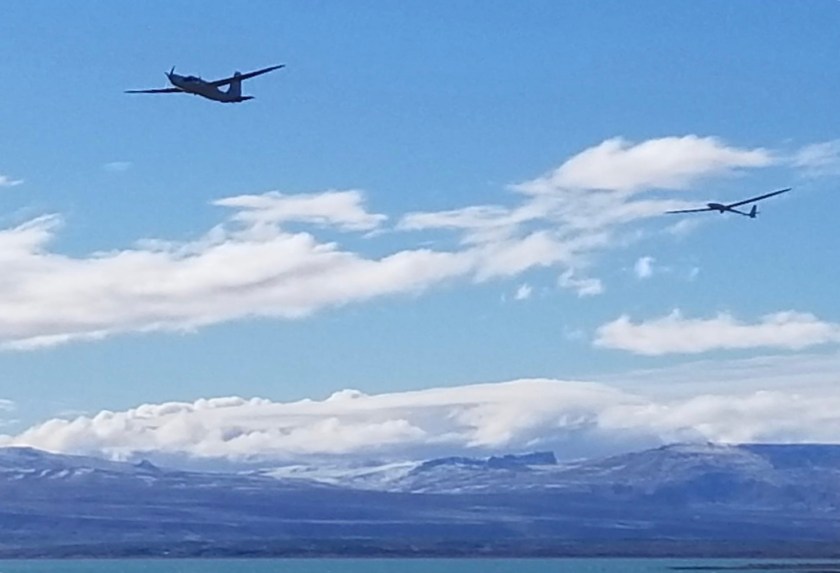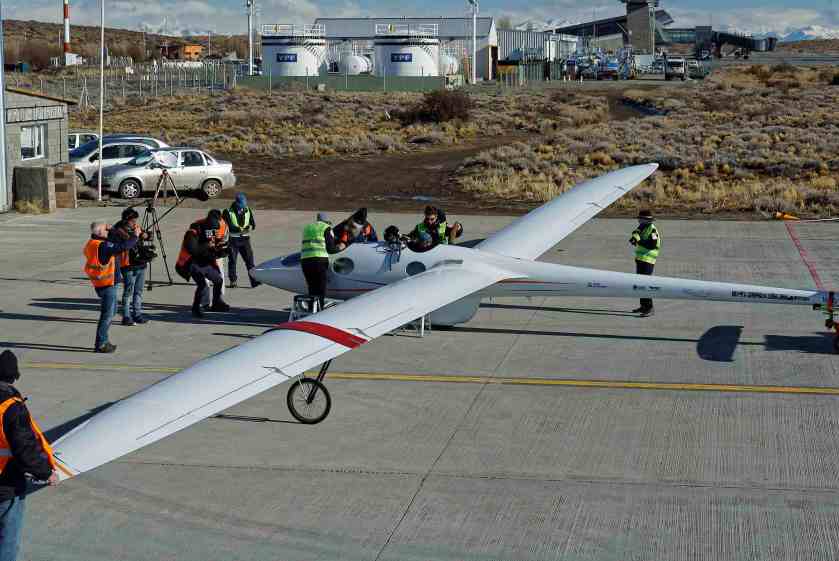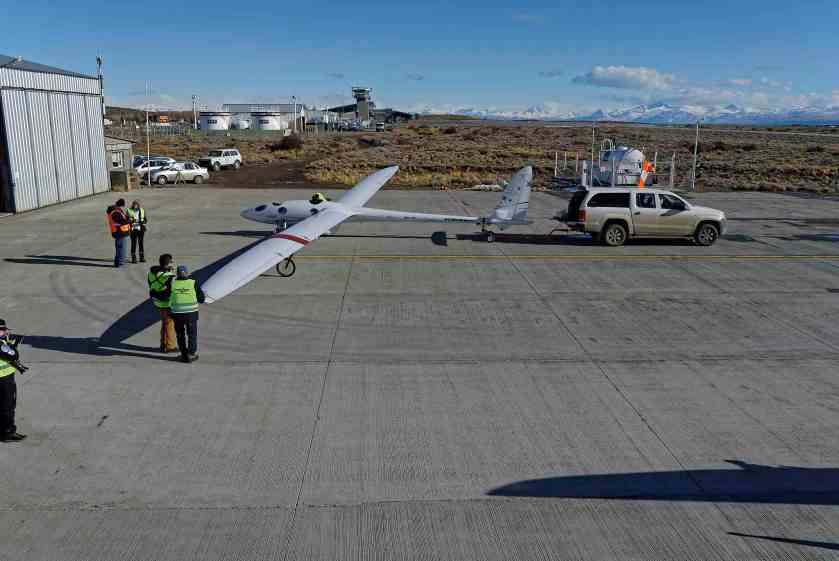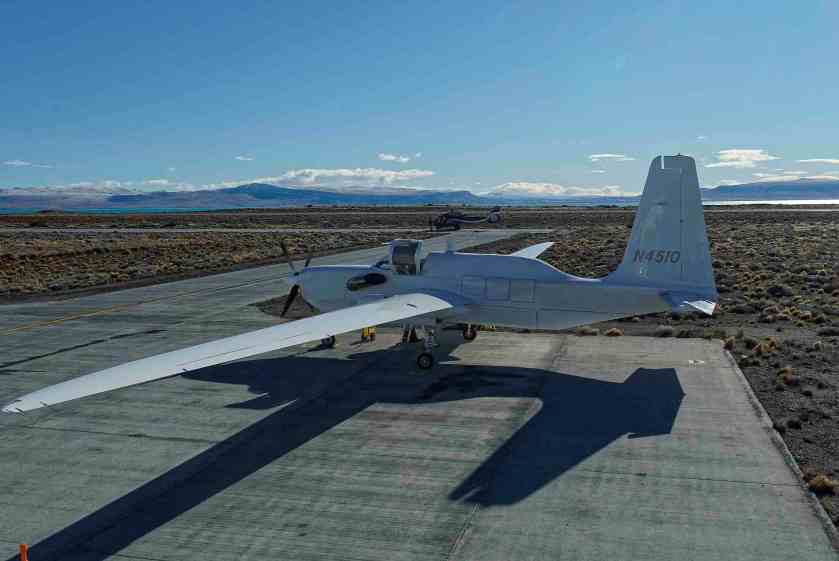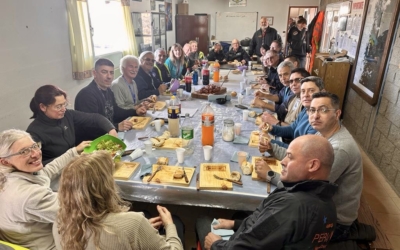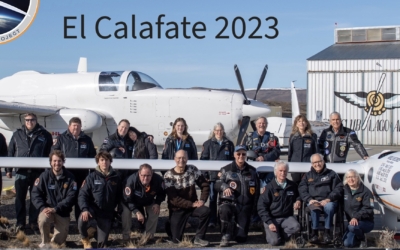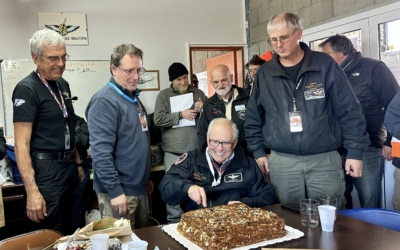Once the Egrett arrived and was in-processed it was time for some test tows of Perlan 2 behind the powerful tow plane. The first test flight was set up for only 11,000 feet to determine the optimum parameters.
Jim and Tim got ready to test lots of new Perlan upgrades in the air. The Airbus helicopter photo chase was ready. The team, tower, and airport were ready. The first launch was flawless; the Egrett used just under 70% power. Smiles all around upon all 3 aircraft landing. There’s a Perlan YouTube video at https://www.youtube.com/watch?v=-E2cXB-Is-s
The next day it was time to test a high altitude tow. Jim and Morgan got ready for a “rocket tow.” The wing really dances as the Egrett takes up slack rope. Even at 68% power the Perlan was airborne shortly after our Perlan wing runner Alec Guay let go. Notice he is wearing ear protection with radio comms since that Egrett turbine is loud on the runway. Jim said they were already at 1,000 feet at the end of the runway.
Loris Gliner has upgraded the Perlan Virtual Cockpit to allow our fans to be watching near-real time with Twitter feed updates straight from CapComm in El Calafate. You will understand that it’s not interactive as we are extremely busy during all phases of the flights. On my Virtual Cockpit photo you can tell they climbed to 30,000 feet in just over 30 minutes. In other words, they averaged almost 1,000 foot per minute up to 30,000 feet – a rocket tow. Around 25,000 feet the Egrett starting conning – making a condensation trail across the sky. Jim did mention on the radio that following a tow rope which disappeared into a contrail was interesting…You just followed the contrail. From 30,000 to 40,000 feet the tow was not as strong, but that was expected.
Jim asked Mike Malis to fabricate a clear view plenum that stretched from the Perlan 2 front instrument panel across to the forward eyeball window. Jim thought that the moisture from pilot bodies could be prevented from obstructing the critical view as frost. (Not moisture from exhalation as they wear rebreather masks on 100% oxygen.) It was a complete success! Included is a post landing photo showing melted frost on the aft part of the eyeball, but clear polycarbonate eyeball window to the front.
CapComm closely monitored the entire flight with Ed Warnock and Lars Bensch logging events. Dan Gudgel and Tim Gardner searched the forecast models for hints of lift from 30,000-40,000 feet. Only 100-200 foot per minute could be found in over two hours of soaring. Perlan 2 called for the commercial airline schedule update so they could land on an empty runway after the last Aerolineas landing. The helicopter chase rendezvoused with Perlan 2 and got some scenic shots.
Jim had insisted that the tow-out truck carry the fuselage dolly to the runway for any landing after a cold soaked flight. Tago had the dolly loaded. The landing with a stiff cross wind was a gentle touch down. Sure enough, the tire was almost flat upon landing after the extremely cold 3 hour flight. We lifted the fuselage with the dolly, then added some air from the air bottle and the tire was ready to roll again.
We do have some other things still to work on. We had telemetry drop out, so the Virtual Cockpit lost its feed. We must closely inspect the tow rope after each flight. The 2 tail cameras needed a lot of heat at -68 C ( -90 F) for over 2 hours. Our new increased battery capacity from 100 amp hours to 150 has power to spare. We have always had a very innovative team and we will find the solutions. Perlan Soars! Jackie
For a spectacular 2 minute video of Perlan flying above the Egrett’s contrail and release at 40,000 feet see https://youtu.be/0-tGMz-gxjI

